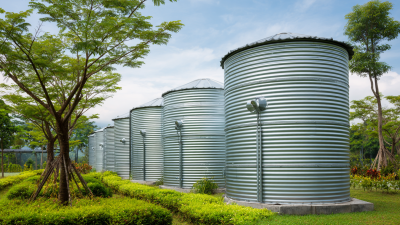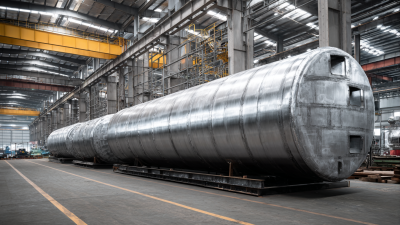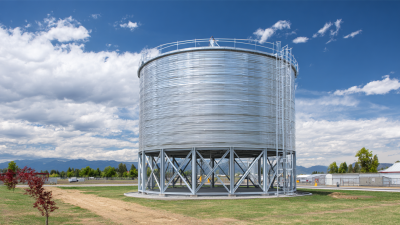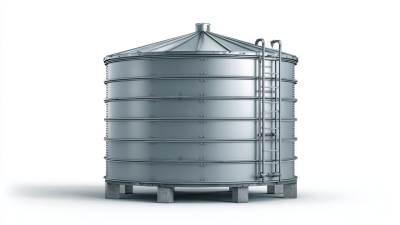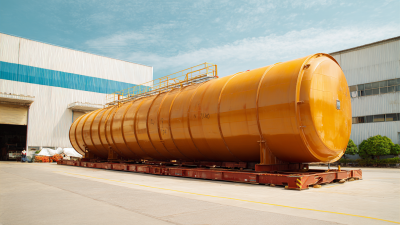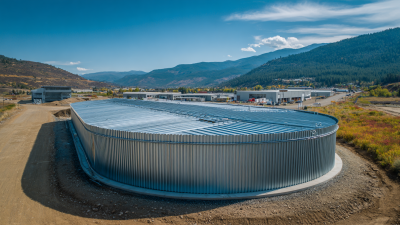In recent years, the demand for sustainable practices in construction and water management has surged, driving innovation in the use of Steel Water Tanks. According to a report by the World Steel Association, steel is one of the most recycled materials globally, with a recycling rate of over 85%, making it an eco-friendly choice for various applications, including water storage. The global market for water storage solutions is projected to reach $7.2 billion by 2025, indicating a growing reliance on durable and sustainable materials. As municipalities and businesses alike shift towards greener solutions, Steel Water Tanks present unique opportunities for eco-friendly projects due to their longevity, minimal maintenance needs, and recyclability. This article explores innovative strategies to maximize the use of Steel Water Tanks, aiming to highlight their potential in reducing environmental impact while enhancing water management systems.
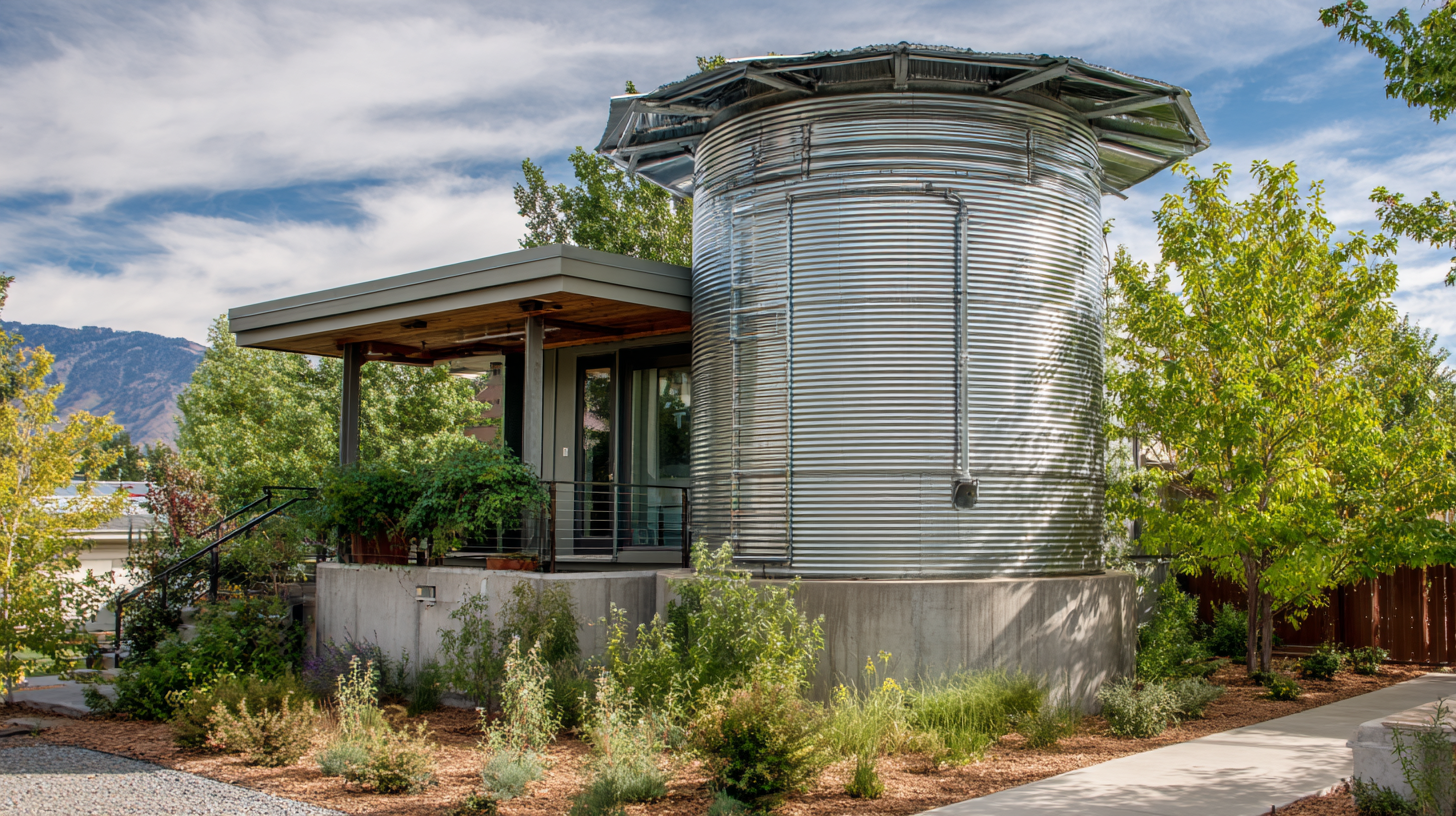
Steel water tanks offer a unique opportunity to blend functionality with innovative design in sustainable architecture. Due to their durability and versatility, these tanks can be creatively integrated into various eco-friendly projects. According to a report from the World Steel Association, the lifecycle of steel can be extended indefinitely through recycling, making it an environmentally sustainable choice for water storage. For instance, incorporating green roofs or vertical gardens onto the surfaces of steel tanks can enhance urban biodiversity while providing energy-efficient insulation.
Tips: When designing with steel water tanks, consider incorporating aesthetic elements like artistic facades or vibrant colors that harmonize with the surrounding environment. Utilizing locally sourced steel can reduce transportation emissions, ensuring that your project is truly sustainable.
Additionally, the use of innovative coatings can prevent corrosion and increase the longevity of steel tanks. The American Society of Civil Engineers emphasizes that protective coatings can extend the lifecycle of steel structures by 30% or more, which aligns perfectly with sustainable design principles. Features such as rainwater harvesting systems can be integrated into the tank design, promoting water conservation and creating a closed-loop system that benefits both the architecture and the environment.
| Design Concept | Sustainability Benefit | Usage Example | Capacity |
|---|---|---|---|
| Green Roof Integration | Reduces urban heat, improves air quality | Urban parks, residential buildings | 5000 liters |
| Rainwater Harvesting | Conserves potable water, reduces runoff | Schools, community centers | 10000 liters |
| Solar Tank Heating | Utilizes renewable energy for heating | Residential heating systems | 3000 liters |
| Living Walls | Enhances biodiversity, improves insulation | Commercial buildings, hotels | 7500 liters |
| Aquaponics Systems | Sustainable food production, water recycling | Urban farms, educational facilities | 2000 liters |
The integration of renewable energy solutions with steel water tank systems presents a unique opportunity to enhance sustainability in eco-friendly projects. Steel water tanks are lauded for their durability and recyclability, often lasting over 50 years when properly maintained. By incorporating solar panels onto these tanks, projects can utilize the stored energy for various applications, such as water heating or powering pumps, contributing to a reduction in carbon footprints. According to a report by the International Water Association, integrating renewable energy systems can decrease operational costs by up to 30%, making it an attractive prospect for developers focusing on sustainable infrastructure.
Furthermore, the combination of rainwater harvesting systems with steel tanks can lead to significant water conservation efforts. Studies from the Water Research Foundation indicate that combining storage solutions with renewable energy not only maximizes efficiency but also enhances the resilience of water supply systems, particularly in areas prone to drought or water stress. This holistic approach encourages the sustainable use of resources, while also addressing the pressing challenges of water security and energy consumption. As eco-friendly projects continue to evolve, the synergy between steel water tanks and renewable technologies can play a crucial role in fostering environmental sustainability.
Steel water tanks are increasingly recognized for their role in rainwater harvesting, particularly in eco-friendly projects. According to a report by the National Oceanic and Atmospheric Administration (NOAA), urban areas have seen up to 25% of annual rainfall lost to runoff, which can lead to resource wastage and water pollution. By implementing steel water tanks, communities can capture and store this precious resource, reducing reliance on municipal water systems and alleviating the strain on overburdened infrastructure.
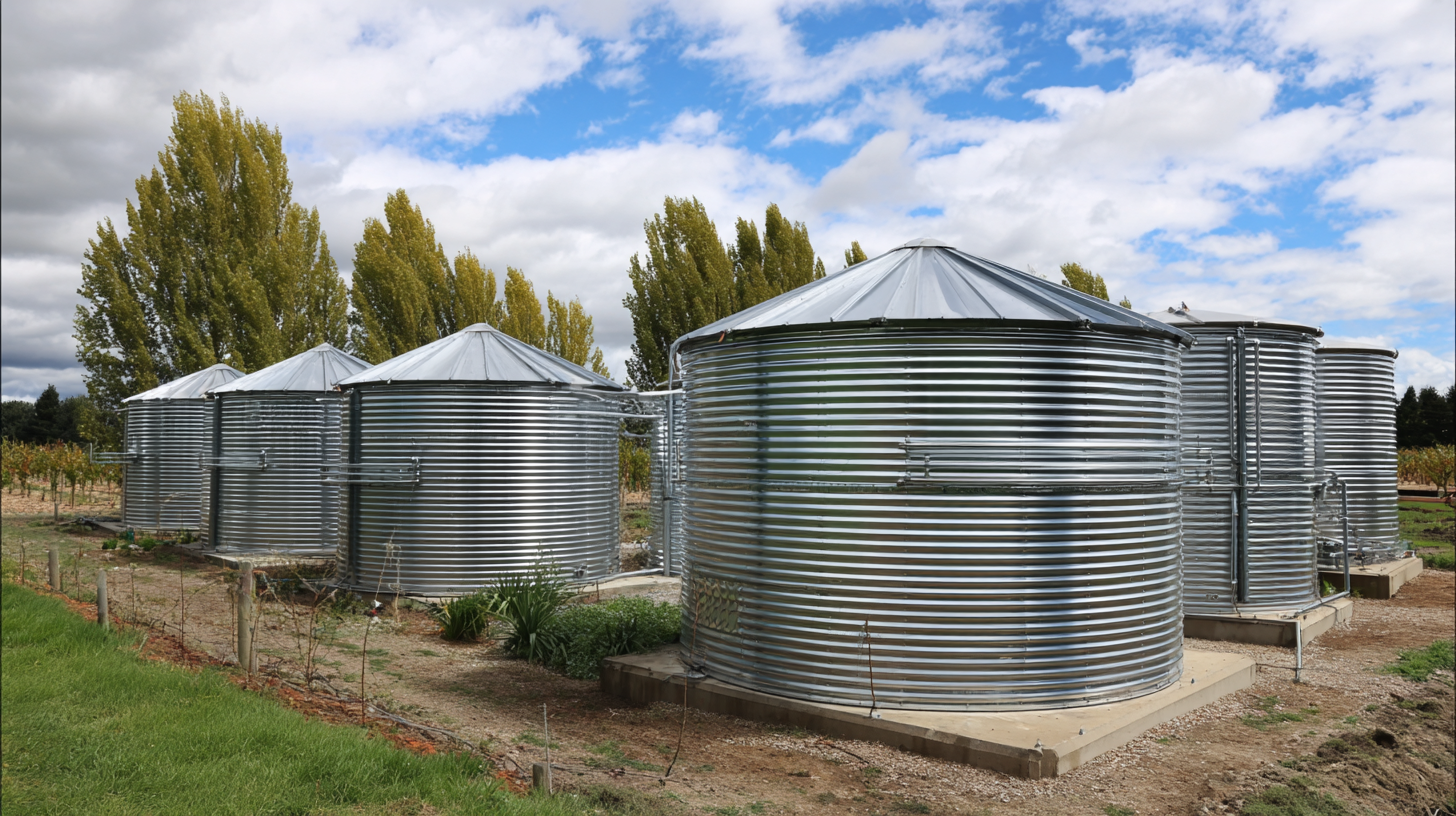
Moreover, the durability and recyclability of steel make it an ideal choice for sustainable water storage solutions. Research indicates that steel tanks can have a lifespan exceeding 30 years, requiring minimal maintenance, which aligns perfectly with eco-friendly principles. Utilizing these tanks for rainwater harvesting not only serves to safeguard local water supplies but also promotes water conservation practices. In fact, the American Rainwater Catchment Systems Association (ARCSA) estimates that capturing rainwater can decrease stormwater runoff by 50% in urban environments, making steel tanks a pivotal component of sustainable urban planning.
Steel water tanks play a pivotal role in enhancing community resilience through robust infrastructure designed for eco-friendly projects. These structures are not only durable but also adaptable, allowing communities to manage water resources efficiently, especially in areas prone to drought or flooding. By incorporating steel water tanks into local water management strategies, communities can facilitate rainwater harvesting and stormwater retention, thus reducing dependency on traditional water sources. This innovation not only ensures a steady supply of clean water but also protects against water scarcity during critical times.
Moreover, the use of steel water tanks provides an opportunity for communities to engage in collaborative projects that foster social cohesion and environmental stewardship. Local residents can participate in the installation and maintenance of these tanks, promoting a sense of ownership and responsibility towards water conservation efforts. This community involvement not only strengthens ecological awareness but also builds a network of support that can respond effectively to emergencies. By embedding these sustainable practices within community infrastructure, steel water tanks emerge as vital tools for fostering resilience and promoting sustainable development in the face of climate change.
In urban environments, the integration of multifunctional green assets is crucial for sustainable development. Steel water tanks, often overlooked, can be reimagined as vital components of eco-friendly projects. According to a report from the World Steel Association, the use of steel in construction can reduce overall carbon emissions by up to 20%, making it a viable material for environmentally conscious urban infrastructure. Steel water tanks can be transformed into aesthetically pleasing rainwater harvesting systems, contributing to urban biodiversity while providing essential water resources for irrigation and cooling systems.

Moreover, these tanks can serve as spaces for community engagement and education. By repurposing them into vertical gardens or art installations, cities can promote green practices and raise awareness about water conservation. A study by the Green Infrastructure Collaborative highlighted that incorporating green infrastructure, including multifunctional water tanks, can mitigate urban heat islands and improve air quality by up to 30%. As cities strive to become more resilient against climate challenges, steel water tanks offer innovative solutions that align with sustainable urban planning initiatives, ultimately enhancing the livability of our urban spaces.
